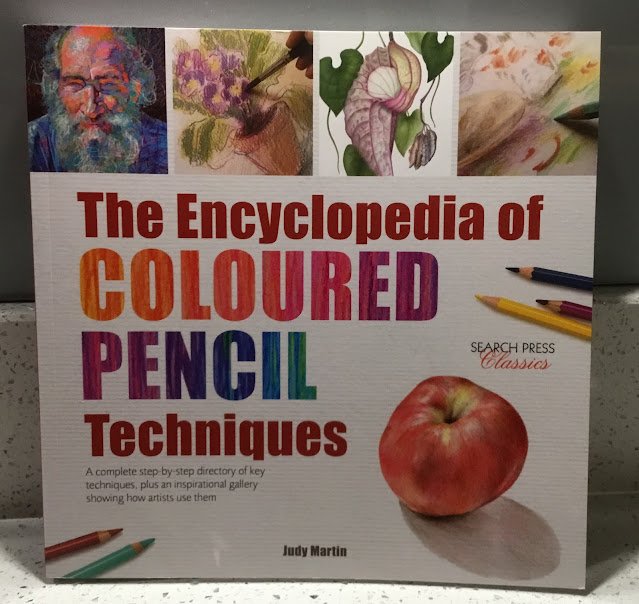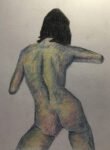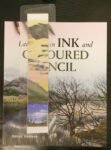And here it is, the last of the books I got for my birthday to be reviewed. It’s a 176 page paperback. It’s a book of two halves, with about half of it on techniques and half of it a gallery for inspiration. I’ll talk about these two sections separately, then move on to common themes and the rating.
So first there’s all the techniques. 38 techniques are described, each of them given a maximum of two pages of discussion. I was disappointed in this section. Maybe the clue was in the name of the book but this really did feel like reading an encyclopaedia. It was a series of separate articles that could be picked out and read at random; I’d rather have gone on a journey. A beginners’ book needs to start slowly, then introduce important techniques one at a time, maybe with some longish demonstrations. I got none of that. Burnishing was covered in only two pages; the paintings in the book look much more shiny than mine but there was nothing there to tell me what I’m doing wrong. And there wasn’t even any structure to the first half. A list of 38 really needs to be presented as a list of lists rather than a big list. You know, just divide it into separate groups covering drawing, colouring, advanced techniques, mixed media, that sort of thing. And there are things in there that I really wasn’t interested in. All the mixed media stuff for a start but the worst bit was a couple of pages on how to correct errors in your drawing by cutting them out and filling the hole with another piece of paper cut to the same shape and sticky taped on the back. Is she kidding me?
Then there was the gallery. A mix of some really good paintings and some absolute cack. I mean, what is this? It doesn’t even look like coloured pencil

The words accompanying the paintings are unhelpful. Judy praises everything she sees and loses credibility in my eyes. The paintings are divided up into landscapes, objects, nature and people (happy with that, the sort of list of list that I thought was missing in the first half) and there are some words around these subjects and around smaller subjects within them (e.g. all the different types of landscapes) but these reminded me too much of Garth Crooks on BBC Sport. Garth likes to make really obvious comment then sit there pouting as if he’s come up with something really profound. Judy hits us with amazing insights about how textile patterns get messed up when there are folds or how animals and kids move more than bowls of fruit. When she wasn’t Garthing, she’d be telling us you can give the impression of movement with coloured pencil marks but then not tell us how.
There are some common themes to both sections that are worth mentioning.
– They both included demonstrations but none of them went into the level of detail that I needed as a beginner.
– The tone of the book was abrupt and choppy, from the encyclopaedia style in the first half to Garth Crooks in the second. It took me days to get through the whole book, and that’s not a compliment.
– There was a lot of really poor artwork throughout the book. Three of the four extended demos in the second half were really poor, although not as bad as the one in the photo above.
– Maybe it’s my age but the writing was really small in places and difficult to read. I’ve never had this problem with other books.
– There was too much mixed media work featured. Some of the show on show were watercolours where coloured pencil only played a tiny cameo role.
But were there any positives? No, can’t think of any. Beginners need to be led on a journey and this book doesn’t do that. The quest for a beginners book on coloured pencils goes on.
🎨










Leave a Reply